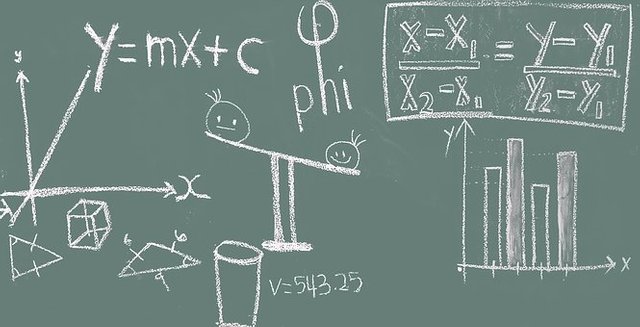Commutativity in Mathematics and Nature - The Importance of Commutative and Non-Commutative Processes
In mathematics,commutativity is a long word describing a very simple concept. Acommutative process is one which can be reversed with no change inresult.
The question of whether or not a given operation of commutative is,at first, a remarkably simple one to answer, especially when consideringthe most basic mathematical operations.
Addition, for example, is certainly commutative, as anybasic addition problem can be reversed with absolutely no change in theequation's outcome: 4 + 3 = 7 just as 3 + 4 = 7.
Subtraction, however, is most definitely non-commutative: 4 - 3 = 1 whereas 3 - 4 = -1.
Multiplication is commutative for the same reason as addition: 4 x 3 and 3 x 4 both equal 12; whereas division is non-commutative because 4/3 does not remotely equal 3/4. These four most basic operations can be combined and rearranged atwill, but the commutative properties of the various operators willcertainly remain true, making commutativity a rather valuable tool evenfor those who only desire to know the most basic principles ofmathematics.

Commutativity Beyond the Basics
Moving beyond mere addition, subtraction, multiplication, anddivision, however, the world of commutativity becomes far murkier, forhere, even an operator such as division can become non-commutative.
Matrix multiplication, for example, is actually non-commutative, asmultiplying two matrices together is fully dependent upon the order inwhich the operations are performed. Therefore, reversing or changing theorder in any way dramatically alters the results of the operation as awhole.
Similarly, in the mathematics of set theory or group theory, commutativity can most certainly be altered depending on the nature of the set being operated upon.
There is also an entire branch of mathematics known as Non-Commutative Geometry,which deals with the non-commutativity of operations performed oncomplex structures such as manifolds and other topological spaces, atopic which holds many applications, both within pure non-Euclidean mathematics as well as within mathematical physics.
Non-Commutativity in Nature
Moving briefly beyond the realm of pure mathematics, however, it israther easy to see examples of commutativity and non-commutativity inevery area of life and the natural world.
A most simplistic example might be the eating of an ice cream cone.Is this activity commutative? In order to determine this one need onlyask themselves whether it matters which is eaten first - the ice cream,or the cone? Clearly this represents a commutative activity, for eatingthe cone first most assuredly changes the entire course of the eatingprocess.
On the other hand, what about putting on a pair of socks? Does itmatter in which order the socks are put on one's feet? Probably not.Therefore, this is a commutative activity.
Now, beyond these rather simple activities (and the countless othercommutative and non-commutative events which most certainly occur ratherfrequently without notice), a little thought can turn up an entire hostof other problems of commutativity just outside this "common" realm.
In physics, for example, commutativity has played a rather massive role. Quantum mechanics,for example, has found some of its most dramatic experimental resultsby demonstrating rather counter-intuitive forms of non-commutativity.This concept lies at the heart of Heisenberg's famous uncertaintyprinciples (which makes sense because this principle is founded upon themathematics of matrices, which, as has already been stated, arenon-commutative).
Similarly, the question has been raised by many scientists whetherthere are operators within the human brain itself which are inherentlynon-commutative, an idea which may begin to explain some of thesubtleties of human consciousness.
Clearly, when one moves beyond the simplicity of elementarymathematics, this seemingly tame and simple concept of commutativitybecomes both vitally important, and absolutely fascinating.